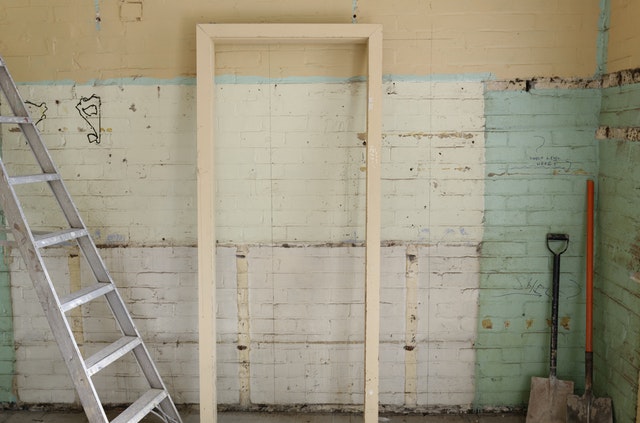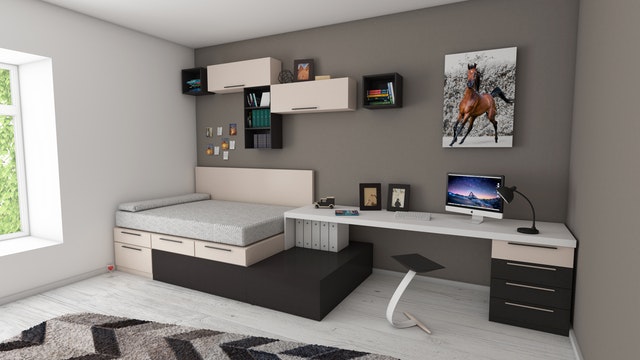Fall Outdoor Lighting Tips
 Many people associate the fall months with cooler temperatures and changing colors. But another defining characteristic of fall is that the days become shorter. Yes, there’s limited daylight, as the sun rises later and sets earlier.
Many people associate the fall months with cooler temperatures and changing colors. But another defining characteristic of fall is that the days become shorter. Yes, there’s limited daylight, as the sun rises later and sets earlier.
Noting this, it’s important to take any exterior lighting into consideration if you’re listing your home this fall. It’s important because you want your home to have a welcoming vibe to it, but with the potential for showings to occur in limited daylight, some modifications and new light installations may be necessary in order for it to stand out. What’s more is that exterior lighting can serve as a theft deterrent.
Here’s a closer look at some fall outdoor lighting tips to enhance the appeal of your home this fall:
Go Solar
Solar lighting is an effective, sustainable way to highlight the landscape of your yard, and illuminate paths and walkways. Just make sure that you’re placing solar lights in areas that receive lots of sunlight during the day so that they have plenty of energy after the sun goes down.
Border Patios, Decks
If your backyard features a patio, deck or gathering space away from the home, don’t miss an opportunity to border it with lights to better highlight said features. If your deck or patio has railing, consider stringing lights throughout it.
Here’s another neat idea: If you have a patio umbrella, consider purchasing lights that fit within it. You should be able to purchase an umbrella solar light set from your local hardware store, which does wonders in providing accent lighting for this area. Even if the umbrella isn’t staying with the house, it can still make for a nice touch.
Don’t Shine Lights On Windows
Any lights that shine on windows will only hinder your home’s appearance. That’s because they’re likely to create a glare. Make sure that any lighting that you incorporate is well balanced and only goes to help the home’s overall appearance. On a similar note, make sure that any lighting doesn’t clash with each other.
Consider Uplighting
Uplighting, or shining lights so that they are hitting your home at an upward angle, is a creative way to make your home appear larger. Additionally, uplighting can help accentuate unique architectural features. Be sure to uplight from each side of the house for the best overall look.
Light For Safety
Finally, you should also be arranging lights in a way that promotes safety on your property. For instance, if there are any steps or inclines, make sure that the areas are well lit to avoid the potential for injury.
Be sure to contact your trusted home mortgage professional if you are considering buying a new home or refinancing your current property.

 Fall is the time to get back into a comfortable routine, but it’s also a great time to incorporate social events into weekend work parties, and gather friends to offer neighbors a helping hand — or just moral support — to spruce up their property.
Fall is the time to get back into a comfortable routine, but it’s also a great time to incorporate social events into weekend work parties, and gather friends to offer neighbors a helping hand — or just moral support — to spruce up their property. Reality TV shows have energized everyday people to dive into the real estate market and make money flipping houses. The dramatic presentation and profitable end results make the industry seem like a sure thing. But house-flipping, like any industry, has its share of challenges.
Reality TV shows have energized everyday people to dive into the real estate market and make money flipping houses. The dramatic presentation and profitable end results make the industry seem like a sure thing. But house-flipping, like any industry, has its share of challenges. Downsizing at any stage of life can offer multiple benefits. Less square footage may come with a smaller price tag and usually means less space to clean. However, when downsizing a home, there’s usually the question of what to do with everything. That’s when creative storage ideas become essential.
Downsizing at any stage of life can offer multiple benefits. Less square footage may come with a smaller price tag and usually means less space to clean. However, when downsizing a home, there’s usually the question of what to do with everything. That’s when creative storage ideas become essential.  While the weather is still pleasant this fall, it can be a good idea to plan ahead for early spring blooms. Trim shrubbery, plant bulbs, install new edging or add whimsical garden accessories to assure that when spring rolls around you’ll have something attractive to look at. Getting creative now will boost your spirits when winter seems to last longer than it should!
While the weather is still pleasant this fall, it can be a good idea to plan ahead for early spring blooms. Trim shrubbery, plant bulbs, install new edging or add whimsical garden accessories to assure that when spring rolls around you’ll have something attractive to look at. Getting creative now will boost your spirits when winter seems to last longer than it should!